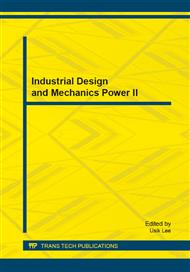p.969
p.973
p.977
p.981
p.985
p.990
p.994
p.999
p.1005
Application of Kansei Engineering in Electric Car Design
Abstract:
Under the background that Chinese automakers are in need of effective approaches in designing electric cars, Kansei engineering enables the designers to apply quantitative analysis from the perspective of user analysis so that they can quickly identify key design elements and build correspondence between the design images and the shape elements. The paper uses cases study to illustrate the application of Kansei engineering in the design of the electric cars.
Info:
Periodical:
Pages:
985-989
Citation:
Online since:
October 2013
Keywords:
Price:
Сopyright:
© 2013 Trans Tech Publications Ltd. All Rights Reserved
Share:
Citation:


